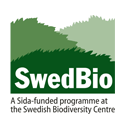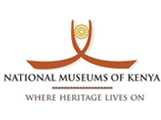Scientific Classification
Species in the Genus
Species in Kenya, Tanzania & Uganda
Description
Possible Causes of Confusion
Distribution in Kenya, Tanzania & Uganda
Habitats
Nesting
Crops Visited
Other Plants Visited
Economic / Ecological Importance
Threats
Conservation and Management Practices
Legislation (National and International)
References
Editors
Acknowledgements
Contact
Click on images to enlarge
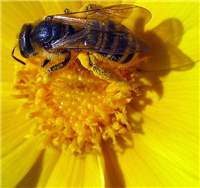
Halictus species. Photo by Christophe Quintin (CC BY-NC)
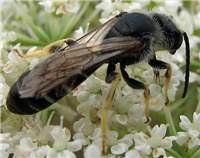
Halictus rubicundus. Photo by J.C. Lucier (CC BY-NC 2.0)

Halictus scabiosae. Photo by Yvan (CC BY-NC-SA)

Halictus species (female) - pinned specimen. Photo: Connal Eardley
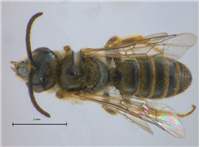
Halictus species (male) - pinned specimen. Photo: Connal Eardley
Summary
Honey bees are not the only bee species that are significant for human wellbeing. Halictus bees are a group of native bee species that do not produce honey but are likely to be important pollinators of crops and wild plants. These small, bright metallic bees are not aggressive. However, they can sting for defence. They live independently of others (i.e. they are solitary) or they live in small groups and build their nests in the ground. This fact sheet provides information about these bees to encourage farmers to understand and protect them to help ensure that their crops are effectively pollinated.
From a conservation and agricultural standpoint it is not necessary to recognise all the different bee genera. However, it is important to know that there is a large bee biodiversity. Different bee genera pollinate different plant species, although there is some overlap that acts as a buffer as bee populations wax and wane. For healthy ecosystems, including agro-ecosystems both diversity and abundance in the bee fauna is important.
Common Name (Language)
Mining bees (English)
Scientific Classification
Kingdom: Animalia
Phylum: Arthropoda
Class: Insecta
Order: Hymenoptera
Family: Halictidae
Subfamily: Halictinae
Tribe: Halictini
Genus: Halictus Latreille, 1804
Species in the Genus
There are many species of Halictus bees recorded in different parts of the world. More than 330 species have been recorded representing 15 subgenera.
Species in Kenya, Tanzania & Uganda
Little work has been done on Halictus bees in East Africa, with records of only seven species from
Description
Halictus bees are not well known by local people (including farmers) in
Possible Causes of Confusion
Halictus bees are easy to identify because they are mostly metallic gold, or very pale green or blue. There are few other bees that are this colour. Other metallic blue or green bees are bright coloured, except a few Ceratina and Nomioides that are similar to Halictus. The former are long tongued and the latter are very small.
Distribution in Kenya, Tanzania & Uganda
There is little information about the distribution of these bees within the
Habitats
Halictus bees can be found in all habitats (land-uses). Halictus bees are widely distributed and common in disturbed areas and appear to be fairly generalised feeders on annual plants. They are found in forests and farmlands (Martins 2008, Kasina et al. 2009).
Nesting
Halictus bees are solitary bees that construct their nests by burrowing in soil (Michener 1974). They like open areas without vegetation. The literature is old and there is a need for studies to confirm the nesting habitats for these bees.
Crops Visited
Halictus bees visit many different crops though they may be effective on a few specific crops. They have been recorded to pollinate okra, melon and apple (Njoroge et al. 2004). Kasina et al. (2010) showed that the behaviour of Halictus bees while visiting squash flowers can effectively pollinate the crop.
Other Plants Visited
Wild relatives of the crops listed above are visited by these bees. There is also a wide range of plants belonging to many different families that provide pollen to Halictus bees in natural habitats. Halictus bees in
Economic / Ecological Importance
Little information exists on the usefulness of these bees to the lives of the people in
Threats
In
Conservation and Management Practices
There are now concerted research efforts in the region to develop best practices for conservation and management of bees that are compatible with other good farm practices, to enhance crop production. Theoretically, bee conservation and management is inexpensive and adopted activities can also improve the aesthetic value of the landscape. Such practices involve setting land aside (e.g. a 1-metre strip) in the farmland to host all year round food resources for the bees, as well as safer sites for nesting, mating, resting and refuge from natural enemies. During flowering, farmers should manage pesticide usage carefully to avoid poisoning flower-visiting bees. Farmers should also minimise pesticide drift from the field to adjacent areas. Laws governing registration and use of plant protection products indirectly play a major role in the protection of pollinators. Trampling by people and livestock and tilling should be managed to conserve the nesting sites of soil-nesting species such as Halictus bees. KARI (the Kenya Agricultural Research Institute) is developing protocols for mass rearing of different species of solitary bees. Any successful results from this research will be freely communicated to the public. In addition, KARI is collaborating with other stakeholders to ensure in situ conservation and management of bees for pollination purposes. Much of the work of conserving native bees will be underpinned by raising public awareness of the importance of these species.
Legislation (National and International)
There is not yet any legislation in
References
1. Eardley CD and Urban R (2010) Catalogue of Afrotropical Bees (Hymenoptera: Apoidea: Apiformes). Zootaxa 2455:1-548.
2. Kasina M, Nderitu J, Kraemer M, Martius C and Wittmann D (2010) Some aspects of squash pollination in Kenya. KARI Biennial scientific Conference, Nairobi
3. Kasina M, Kraemer M, Martius C and Wittmann D (2009) Diversity and activity density of bees visiting crop flowers in Kakamega, western Kenya. Journal of Apicultural Research, 48 (2): 134-139
4. Kasina M, Kraemer M, Martius C, Wittmann D (2009) Farmers' knowledge of bees and their natural history in Kakamega district, Kenya. Journal of Apicultural Research, 48 (2): 126-133
5. Martins DJ (2008) Pollination observations of the African Violet in the Taita Hills, Kenya. J EA Nat Hist 97 (1): 33-42
6. Michener CD (1974) The social behaviour of the bees. Belknap Press, Cambridge, USA. 5. Michener CD (2007) The Bees of the world, the John Hopkins University Press, Baltimore and London, pp 913.
7. Michener CD (2007) The Bees of the world, the John Hopkins University Press, Baltimore and London, pp 913.
8. Njoroge GN, Gemmill B, Bussmann R, Newton LE, and Ngumi VW (2004) Pollination ecology of Citrullus lanatus at Yatta, Kenya. International Journal of Tropical Insect Science, 24(1): 73–77.
Editors
Théodore Munyuli, Busitema University - Uganda; Muo Kasina, Kenya Agricultural Research Institute (KARI) - Kenya; Juma Lossini, Tropical Pesticides Research Institute (TPRI) – Tanzania; John Mauremootoo, BioNET-INTERNATIONAL Secretariat – UK; Connal Eardley, Plant Protection Research Institute (PPRI) – South Africa.
Acknowledgements
We recognise the support from the Kenya Agricultural Research Institute (KARI), Tropical Pesticide Research Institute (TPRI) –
Contact
BioNET-EAFRINET regional coordinator: [email protected]





